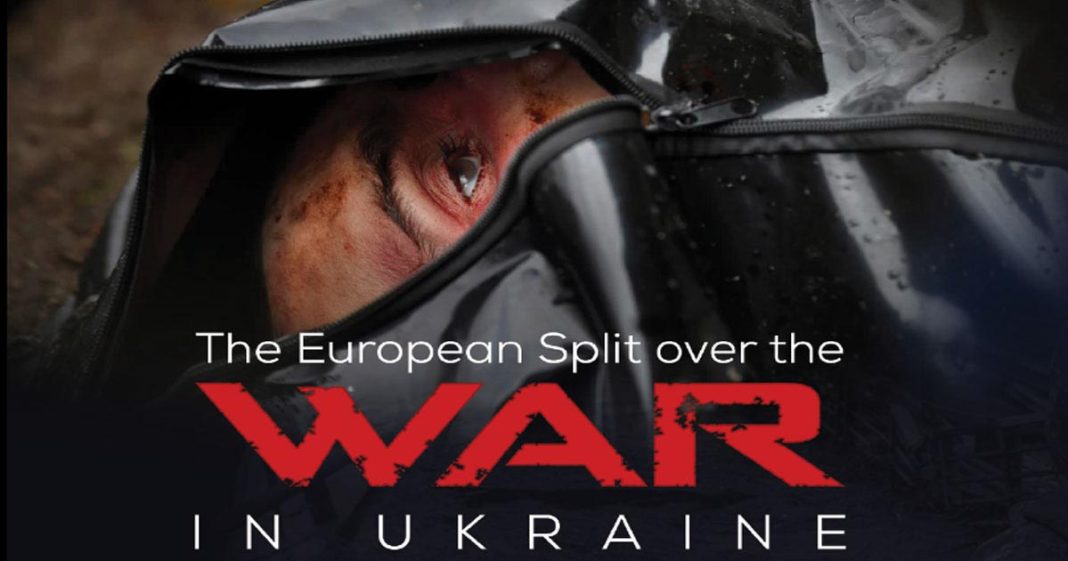If one has to combine a list of major highlights of the year 2022, then the ongoing war in Ukraine will surely be the first entry. Starting in February this year, the war is into its fifth month, claiming thousands of lives and millions in damage with implications for everyone in the world. When it comes to fighting or sustaining a war, public opinion matters the most. Public opinion in Europe is divided over the war in Ukraine.
In the first 100 days of Russia’s war on Ukraine, European public opinion helped to solidify Europe’s political response, but a new poll conducted by the European Council for Foreign Relations (ECFR) reveals that diverging public preferences could weaken this unity. ECFRs, in its research, identified two divergent camps, the Peace Camp and the Justice Camp. Voters from the Peace Camp want to end the war as soon as possible. While for the voters of Justice, the more pressing goal is to punish Russia.
These camps will force governments to balance their stated positions and the public mood in their countries. To strengthen European unity and avoid polarization between countries and within countries, the governments across Europe will need to bridge the gap between these emerging camps; otherwise, these groups will hurt the European unity vis a vis Moscow. The data below is taken from the ECFR’s research, and it covers the opinion of the voters of both camps from ten European countries on the various aspects of the Russo-Ukraine conflict.
Read more: Stalemate in the Russia Ukraine War
The research shows that when it comes to the prevailing camps across the ten surveyed countries, Poland appears as the only country in the poll where the Justice Camp clearly prevails over the Peace Camp. Meanwhile, Romania, alongside France, Germany, Italy, Sweden, and Spain – exhibits a clear preference for Peace.

The research also notes that across the ten surveyed countries, one-third (35 percent) of respondents are in the Peace camp, and one-fifth (22 percent) belong to the Justice Camp. A further one-fifth (20 percent) declined to choose between either Peace or Justice but still largely supported the EU’s actions in response to Russia’s war in Ukraine. Members of this Swing group share the anti-Russian feelings of the Justice Camp but also worry about escalation – like the Peace camp. In the coming months, pressure will rise on this third group to get off the fence. Their views – and their votes – could be crucial to determining Europe’s next steps.

Representation from the Peace and Justice Camps varies considerably among different European states, generations, and political parties. One notable finding is that, while across all ten countries, the Peace camp is equally divided between men and women, there is a clear dominance of men in the Justice camp: by a proportion of 62 percent men to 38 percent women.

Read more: Russia earns $98 bn from fuel exports in 100 days of Ukraine war
ECFR’s research shows that In terms of Europe’s political and practical response to the war, all three main groups support the cutting of economic ties with Russia. But they do so by radically different proportions: in the Peace camp, 50 percent back this, but 37 percent do not; in the Justice Camp, the difference stands at 83 percent to 11 percent. Among Swing voters, it is 83 percent to 7 percent. The Peace and Justice Camps also differ over whether to sever diplomatic ties: the Justice Camp clearly supports this (70-23 percent), as do the Swing voters (60-30 percent), while the Peace camp opposes this (49-40 percent). Likewise, the Justice Camp and the Swing voters want to cut cultural ties, while the Peace camp opposes this.

Finally, on the question concerning how much attention does your government dedicate to the war in Ukraine? Fifty percent of Peace camp members believe their government dedicates too much attention to the conflict – while 38 percent say there is “just enough” or “too little.” Conversely, in the Justice Camp, 52 percent consider either that enough or too little attention is going towards the war; only 38 percent think there is too much. Swing voters are closer to the Justice Camp on this issue: just 35 percent agree that too much attention is dedicated to the war, while 47 percent say there is enough or too little. The rest of the voters are more likely to say “too much” attention is dedicated to this war (38 percent) rather than “just right” or “too little” (22 percent), even if most of them simply do not know (40 percent).



